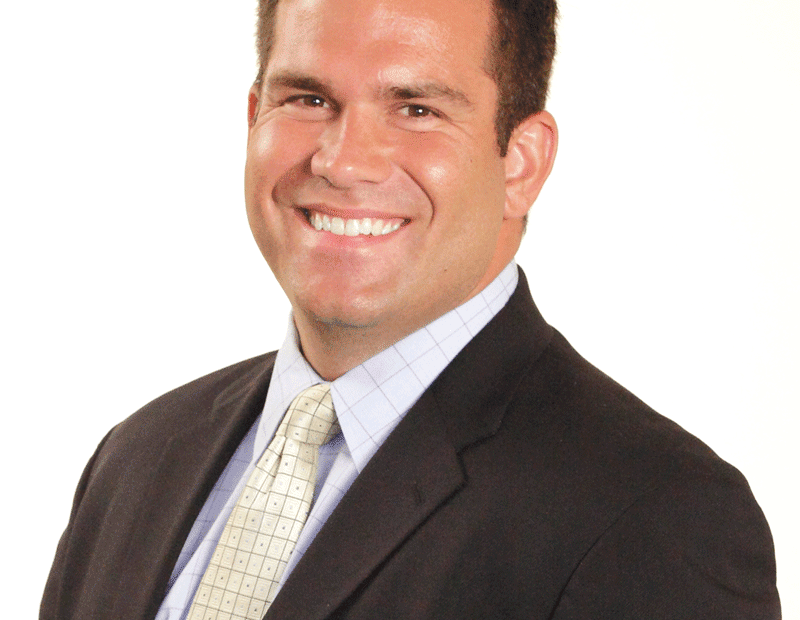
Legacy of Growth
Berkshire Bank Continues Its Ambitious Pattern of Expansion
Sean Gray says Berkshire Bank has become adept at mergers in recent years — not only executing them, but choosing the right ones.
“Acquisition is one of our core competencies. We’re very focused on growth,” said Gray, executive vice president of retail banking for the Pittsfield-based institution.
Indeed, late last month, Berkshire Hills Bancorp Inc., the bank’s parent company, completed the acquisition of Legacy Bancorp Inc., also based in Pittsfield, and merged the two banks under the Berkshire Bank banner. The deal leaves Berkshire Hills with more than $4 billion in assets and a branch network of 63 locations in Western Mass., New York, and Vermont. With the Legacy additions, the institution now employs about 845 people.
As part of its overall expansion strategy, Gray said, Berkshire Bank looks to organic growth first — as he put it, “getting the most out of our existing footprint.”
Still, with numerous acquisitions in the past several years — including Woronoco Bancorp of Westfield in 2005 and New York-based Rome Bancorp earlier this year — “we’re very much seen as a consolidator in our market,” Gray said. “And Legacy was just what we look for in a partner. We always ask, do we share a similar culture? Legacy is a very community-based institution, very customer-centric. And because of their proximity to us, we’re very familiar with them and the talent there.”
Michael Daly, president and CEO of Berkshire Hills, said the merger will benefit not only the bank’s bottom line, but customers, through strengthened retail and business services.
“This acquisition results in improved market share and an expanded footprint in our attractive northeastern markets,” he said. “It contributes to our strong momentum in revenue and earnings growth. This partnership enhances our resources to support the needs of our regions and to provide exceptional, locally based service.”
Growing Footprint
Berkshire Bank had been in a strong position in its market well before acquiring Legacy, boasting $3.2 billion in assets and 48 branches in Massachusetts, New York, and Vermont before adding 15 of Legacy’s 19 branches in the Bay State and Eastern N.Y.
As part of federal approval of the merger, the two banks agreed to sell four Legacy branches — in Pittsfield, Great Barrington, Lee, and North Adams — to a third institution, NBT Bank, to resolve anticompetitive concerns in those markets. Those four branches, with deposits totaling $158 million, will operate as usual under the merger until being transferred to NBT by the end of October.
With 85% of Legacy’s branches located in Berkshire County, “there’s a lot of synergy” between the two institutions, Gray said. When you have someone so close, you have an intimate knowledge of the players and processes. We can take the best of both worlds from each company and deliver better, faster services to our customer base” — especially people who bank at Legacy.
For example, “Berkshire Bank is a larger institution than Legacy, and this [merger] affords us the ability to invest in things like larger insurance operations for our Legacy customers,” he explained. “We have more cash-management sophistication that Legacy customers can take advantage of. With this partnership, we can bring those things to their membership.”
As the eighth-largest bank in Western Mass. by assets, “Berkshire has all the services and sophistication of a large bank,” Gray said. “Some of the larger institutions are foreign-owned, and you see what’s going on in the global economy, the volatility on that front. But a bank of our size has all the products and services you’d need and a tremendous amount of talent — people with large-bank experience — at a community bank with local decisioning.
“So any customer can get what they need,” he added, “but we’re very active in the community and very committed to the communities we serve. Everything a big bank can do, we can do; we have big-bank services but the feel of a small institution.”
Even after the merger, the Berkshire Bank Foundation and the Legacy Banks Foundation will continue to provide charitable contributions to communities served by Berkshire Bank.
“We’ve got our foundation, and in this economically troubled time, we continue to invest in our communities,” Gray said. “We’re on pace to give out more than $1 million to charitable organizations this year, and we’ll continue that very active pace.”
Berkshire Bank officials saw some of those needs up close this year when tornadoes struck the region; the institution was one of the initial wave of companies — many of them banks — that quickly responded with financial relief efforts.
“And, unbeknownst to a lot of people, our Springfield branch was directly hit, and we suffered through some of that alongside the community and the customers we serve,” Gray noted.
The bank’s emphasis on community involvement extends to the employee level as well.
“One of the things we’re most proud of is the very distinct volunteer culture in the bank,” he said. “If an employee wants to take a day off and is really passionate about volunteering for a charitable organization, we’ll pay them for the day and let them out to work. We’ve contributed more than 17,000 hours in that way, and that’s a definitive value; we’re paying those folks, and they’re making an impact on the organizations they’re helping.”
Loan Stars
Like many locally based banks in Western Mass., Berkshire touts its strong bottom line and healthy lending capabilities, even as demand for new loans remains suppressed by a lingering economic downturn — one that might be further roiled by the recent debt crisis in Washington and the downgrade in the country’s credit rating.
“Demand has definitely slowed for much of commercial real estate, and we have seen a slowdown in the market,” Gray said. “But we’re proud that we’ve organically grown our commercial loans by double digits for the last three years,” through acquisitions and by attracting customers from other banks.
“That’s a tribute to the people we have and our value proposition, that we’re seeing good assets come from larger institutions to a bank where they’re going to have more of a relationship,” Gray said. “We’ve been able to to steal our share of business and grow and expand the portfolio by double digits although we’ve seen a slowdown.
National analysts sound a similar chord. “Revenue growth really is a challenge if you are not growing your loan portfolio organically,” Bob Ramsey, an analyst at FBR Capital Markets, told BankDirector.com. “If you don’t grow your assets, it’s difficult to grow your earnings unless you are able to do acquisitions.”
Berkshire Bank has managed to both successfully, and Gray said that all comes back to a strategy of finding partners that mesh with the institution’s culture.
“We bring an organizational foundation [to acquisitions] and base them on similar cultures and local decision-making,” he reiterated. “We’re very much community-oriented, and from a financial perspective, we look for partners believe in the Berkshire Bank story and understand the value of our currency and their future value as a part of it.”
And that’s a legacy that only continues to grow.
Joseph Bednar can be reached at [email protected]






